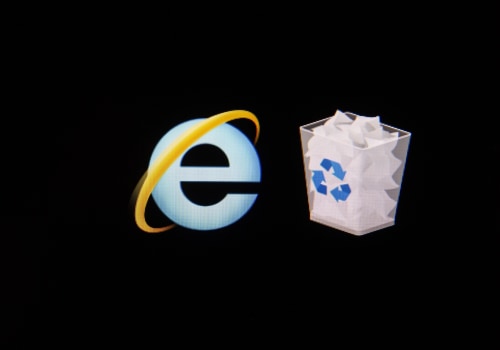Malware protection is a critical component of any online security solution. Without it, your computer could be vulnerable to a variety of malicious threats. In this article, we'll explain what malware protection is, why it's important, and what you need to do to protect yourself from malicious software. Malware, or malicious software, is any program or file that is designed to damage, disrupt, or gain unauthorized access to a computer system. It can come in many forms, including viruses, Trojans, spyware, and worms.
Hackers use these malicious programs to steal data, corrupt files, and take control of computers. Malware protection is the process of protecting your computer from these malicious threats. This includes using anti-virus software to detect and remove malicious programs before they can do any harm. It also includes using firewalls and other security measures to block unwanted traffic from accessing your system. In this article, we'll discuss why malware protection is so important and what you need to do to keep your computer safe from malicious software. We'll also provide some tips on how to stay safe online and protect yourself from the threat of malware. Malware is a type of malicious software designed to damage or gain unauthorized access to a computer system.
There are several different types of malware, each with their own unique characteristics and purpose. Viruses, for example, are designed to replicate themselves and spread to other systems, while worms are designed to spread themselves without any human interaction. Trojan horses are disguised as legitimate programs but contain malicious code that can cause damage or steal data. Finally, spyware is designed to collect information without the user's knowledge. Viruses are one of the most common types of malware and can cause serious damage to a computer system.
They usually spread via email attachments, downloads, or by exploiting security flaws in a system. Viruses typically start by replicating themselves and then spreading to other computers. They can corrupt files, delete important data, or even use your computer's resources to launch attacks on other systems. It is important to keep your system up-to-date with the latest security patches and antivirus software to help prevent viruses. Worms are another type of malware that can spread rapidly across networks.
Unlike viruses, worms do not need to be attached to an email or file in order to spread. They use security vulnerabilities in a system to propagate themselves and often cause a lot of damage in the process. Worms can spread quickly across networks and cause denial-of-service attacks, which can disrupt operations. Trojan horses are malicious programs that disguise themselves as legitimate applications or software updates. They often contain malicious code that can allow attackers to gain control of a system or steal data.
It is important to be wary of suspicious downloads and only install software from trusted sources. Spyware is another type of malware that is designed to collect information from a user's computer without their knowledge. Spyware can be used to collect passwords, credit card numbers, or other sensitive information that can be used for identity theft. It is important to install an anti-spyware program on your computer and regularly scan for malicious programs. Cyber criminals use several techniques to spread malware, such as using social engineering tactics like phishing emails or exploiting security vulnerabilities in software. It is important to be aware of these techniques and stay vigilant when online.
Be sure to only open emails from trusted sources and never click on links or download attachments from unfamiliar emails. The best way to protect yourself from malware is to use antivirus software, firewalls, and keep your software up-to-date. Antivirus software can detect malicious programs and remove them from your computer before they can cause any damage. Firewalls can also help block malicious traffic from entering your system. Finally, keeping your software up-to-date will help ensure that any security vulnerabilities have been patched. It is also important to recognize phishing attempts and other signs of malicious intent online.
Be wary of emails asking for personal information or links that lead to suspicious websites. If you ever receive an email from an unfamiliar sender asking for personal information, it is best not to respond. If your computer does become infected with malware, there are several steps you can take to respond. First, disconnect your computer from the internet as soon as possible and run an antivirus scan. If the scan detects any malicious programs, be sure to remove them immediately.
You should also change any passwords that may have been compromised by the malware and update all of your software. Finally, there are several tips you can follow to stay safe online. Always use strong passwords and avoid using the same password for multiple accounts. Be wary of suspicious emails or links and only download software from trusted sources. Finally, keep your system up-to-date with the latest security patches and antivirus software.
Preventing Malware
Protecting yourself from malware requires a multi-faceted approach.One of the most important elements is the use of antivirus software, which can detect and remove malicious code from your computer. Additionally, you should use a firewall to protect your computer from malicious network traffic, and ensure that all of your software is up-to-date. In addition to these technical measures, it's important to be aware of the signs of malicious intent. Phishing attempts are a common way for attackers to gain access to your computer.
These emails or websites may appear to be legitimate, but they can actually contain links or downloads that contain malicious code. It's important to be aware of these scams and to avoid clicking on any suspicious links. It's also important to be aware of any other signs of malicious intent, such as sudden changes in computer behavior or strange programs that appear on your computer without your knowledge. If you encounter any of these signs, it's important to take action immediately in order to protect your computer from potential damage.
Responding to Malware
Responding to MalwareIf your computer is infected with malware, there are a few steps you can take to respond.The most important thing is to act quickly, as malware can spread quickly and cause serious damage to your system. First, try to detect which type of malware is on your system. There are a few ways to do this: you can use an antivirus program or a malware scanner, or you can manually inspect your system for suspicious files or programs. Once you’ve identified the type of malware, you should try to remove it from your system. You can do this by using an antivirus program or a specialized malware removal tool. If the malware has already caused damage, you may need to restore your system to an earlier point in time before the infection occurred.
This process will usually require you to reinstall any programs that were affected by the malware. It’s also important to stay safe online. Make sure you’re using strong passwords for all of your accounts and that you’re regularly updating your security software. You should also be careful when downloading files from the internet, as malicious software can be hidden in downloads. Finally, make sure you’re aware of the latest malware threats and how to protect yourself against them. Staying up-to-date with the latest security news can help you stay one step ahead of cyber criminals.
Types of Malware
Malware is a type of malicious software designed to damage or gain unauthorized access to a computer system.It can come in many different forms, including viruses, worms, Trojan horses, and spyware. Viruses are malicious code that have the ability to replicate itself. They can be spread through email, file downloads, and even USB drives. Once on a computer system, they can cause damage by deleting files, corrupting data, and more. Examples of viruses include the WannaCry ransomware and the Stuxnet worm. Worms are similar to viruses in that they are self-replicating pieces of code.
However, they do not need to be attached to a file in order to spread. Instead, they can spread through networks and the internet. Once on a system, they can cause damage by consuming system resources and slowing down performance. Examples of worms include Code Red and Blaster. Trojan horses are malicious programs disguised as legitimate software.
They can be spread through email attachments, downloads, or malicious links. Once on a system, they can open backdoors for attackers to gain access to confidential data or install malware. Examples of Trojan horses include Zeus and Ghost RAT. Spyware is a type of malicious software that is used to monitor user activity without their knowledge. It can be used to steal passwords, log keystrokes, and gather other confidential information.
Examples of spyware include SpyEye and SubSeven. Malware is a serious threat to computer systems, and it is essential to understand the different types of malware and how to protect yourself from them. Prevention is key, and that means installing antivirus software, avoiding suspicious links and emails, and ensuring your system is always up-to-date. If you do suspect that your computer has been infected by malware, it is important to respond quickly by taking steps such as disconnecting from the internet, backing up any important data, and running a scan with antivirus software. For more information on malware protection, there are a range of resources available online.






